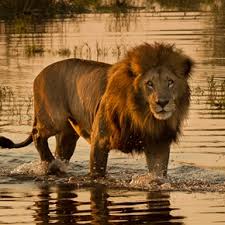Abercrombie and Kent Week—The Cherished Memories on Safari
Those close-up shots of leopards, lions, hippos, rhinos, elephants, and giraffes might have impressed my Facebook friends these past two weeks, but 5 years from now I won’t remember any of those animals. Okay, maybe that one rhino in the Okavango Delta we surprised who ran off in a blur. What I’ll remember is that marimba band playing solely for our group as we arrived for lunch at the Victoria Falls Hotel; my guide, Kebby, clearly enunciating the name of that colorful bird, the lilac-breasted roller; waking up to French-pressed coffee at Stanley’s; all those glorious sunsets, especially the one overlooking the Zambezi on the deck of Sussi and Chuma; heading back to our room at Chobe Chilwero after a long day of game drives and boat rides to find that a bubble bath had been prepared; jumping with young children in hand at the Zambian village of Nakatindi; and all those wonderful stories we shared at dinner with our new friends. These are the special moments I’ll remember and inevitably the driving force behind another trip to Africa some 2 years from now when thoughts about taking that long international flight have faded. I yearn to return to that continent and its people more than any other destination. It’s my spiritual retreat where I feel most alive. I want to thank Abercrombie and Kent for the opportunity this time.

 Talk to any experienced African safari guide and they’ll no doubt tell you that Botswana is the best country on the continent for going on safari. Along with Namibia, Botswana is one of Africa’s least populated wildernesses. The country’s enviable conservation philosophy endorses low-volume, high-revenue tourism, and significant benefits for local communities who live amongst the wild animals. Unlike Kenya’s Maasai Mara or Tanzania’s Ngorongoro Crater, which can often be overcrowded, head to Botswana and you’re not likely to see any fellow travelers out on game drives, walks, or boat rides. The Okavango Delta is a gigantic inland waterway, an island of green in an arid landscape. It’s home to large herds of elephants, some of the biggest lions in Africa, and enough variety of bird life to turn even the most dedicated big-mammal enthusiast into a bird lover. Tomorrow, Lisa and I are headed to Botswana on a
Talk to any experienced African safari guide and they’ll no doubt tell you that Botswana is the best country on the continent for going on safari. Along with Namibia, Botswana is one of Africa’s least populated wildernesses. The country’s enviable conservation philosophy endorses low-volume, high-revenue tourism, and significant benefits for local communities who live amongst the wild animals. Unlike Kenya’s Maasai Mara or Tanzania’s Ngorongoro Crater, which can often be overcrowded, head to Botswana and you’re not likely to see any fellow travelers out on game drives, walks, or boat rides. The Okavango Delta is a gigantic inland waterway, an island of green in an arid landscape. It’s home to large herds of elephants, some of the biggest lions in Africa, and enough variety of bird life to turn even the most dedicated big-mammal enthusiast into a bird lover. Tomorrow, Lisa and I are headed to Botswana on a  Good news! Humpbacks have already been spotted off Stellwagen Bank. Located 7 miles north of Provincetown, Stellwagen Bank is one of the Atlantic coast’s largest feeding grounds for whales. The 18-mile long crescent-shaped bank ranges from 80 to 500 feet below the surface. Currents slam into the bank, bringing nutrient rich cold water to the surface. This attracts fish, which in turn attracts numerous species of whales from April to November—humpbacks, the larger fins, and smaller minkes. One gulp from a hungry humpback whale can take in a ton of fish.
Good news! Humpbacks have already been spotted off Stellwagen Bank. Located 7 miles north of Provincetown, Stellwagen Bank is one of the Atlantic coast’s largest feeding grounds for whales. The 18-mile long crescent-shaped bank ranges from 80 to 500 feet below the surface. Currents slam into the bank, bringing nutrient rich cold water to the surface. This attracts fish, which in turn attracts numerous species of whales from April to November—humpbacks, the larger fins, and smaller minkes. One gulp from a hungry humpback whale can take in a ton of fish. No one in my family really wanted to get up at 7 am to paddle an outrigger canoe. The night before we had a memorable dinner at the
No one in my family really wanted to get up at 7 am to paddle an outrigger canoe. The night before we had a memorable dinner at the  I leave you this week with the latest photo from the talented Paul Cyr. I met Cyr while on assignment from The Boston Globe in Presque Isle, Maine,
I leave you this week with the latest photo from the talented Paul Cyr. I met Cyr while on assignment from The Boston Globe in Presque Isle, Maine,  Home to the world’s largest rhino population, South Africa recently reported that 820 rhinos have already been killed by poachers in 2014. That’s a dramatic rise from the less than a dozen rhinos killed in 2007. More than half of those killings have occurred in
Home to the world’s largest rhino population, South Africa recently reported that 820 rhinos have already been killed by poachers in 2014. That’s a dramatic rise from the less than a dozen rhinos killed in 2007. More than half of those killings have occurred in  This past November, the travel world descended on
This past November, the travel world descended on